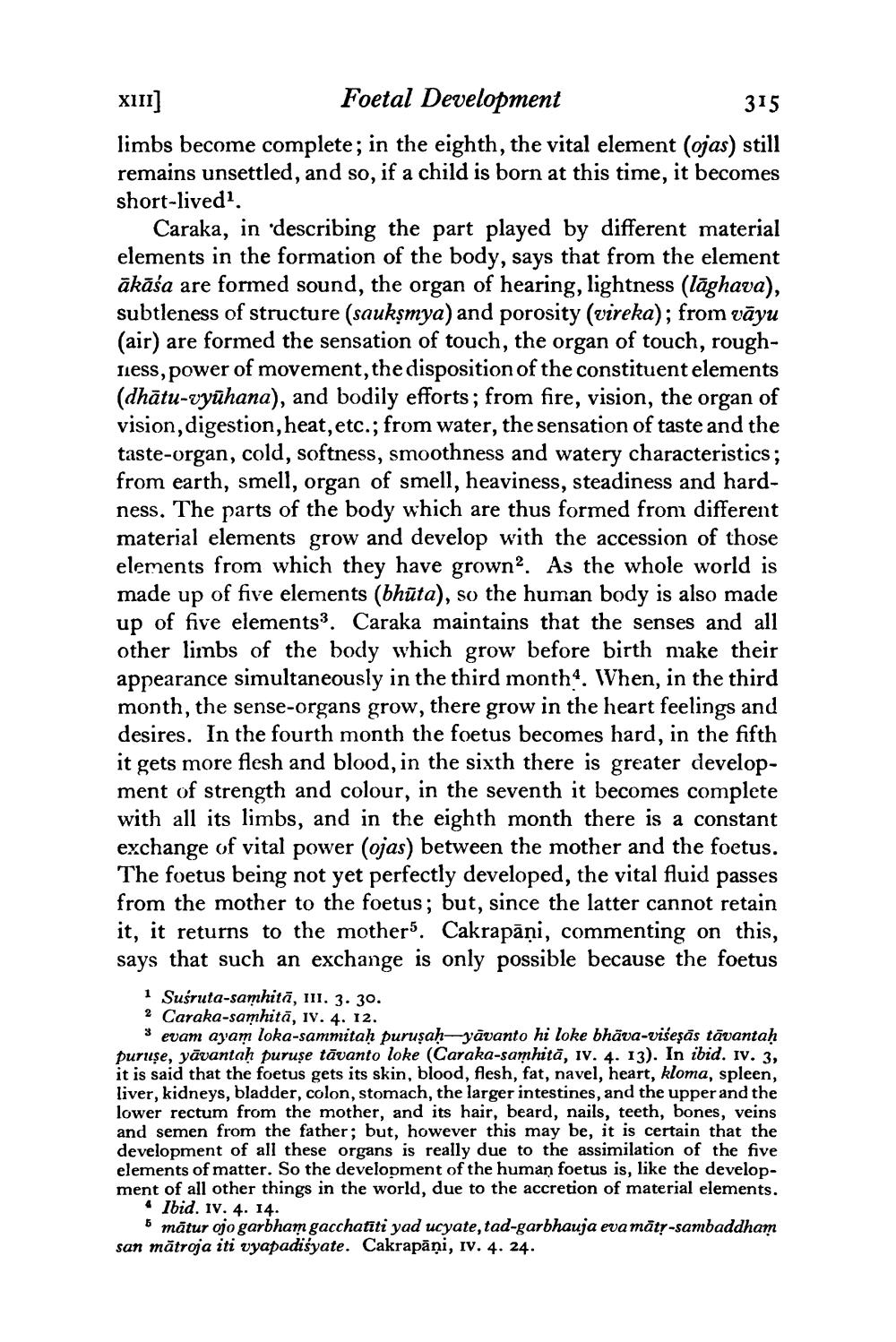________________
XIII]
Foetal Development
315
limbs become complete; in the eighth, the vital element (ojas) still remains unsettled, and so, if a child is born at this time, it becomes short-lived1.
Caraka, in 'describing the part played by different material elements in the formation of the body, says that from the element ākāśa are formed sound, the organ of hearing, lightness (lāghava), subtleness of structure (saukṣmya) and porosity (vireka); from vāyu (air) are formed the sensation of touch, the organ of touch, roughness, power of movement, the disposition of the constituent elements (dhātu-vyuhana), and bodily efforts; from fire, vision, the organ of vision, digestion, heat, etc.;: from water, the sensation of taste and the taste-organ, cold, softness, smoothness and watery characteristics; from earth, smell, organ of smell, heaviness, steadiness and hardness. The parts of the body which are thus formed from different material elements grow and develop with the accession of those elements from which they have grown2. As the whole world is made up of five elements (bhūta), so the human body is also made up of five elements3. Caraka maintains that the senses and all other limbs of the body which grow before birth make their appearance simultaneously in the third month. When, in the third month, the sense-organs grow, there grow in the heart feelings and desires. In the fourth month the foetus becomes hard, in the fifth it gets more flesh and blood, in the sixth there is greater development of strength and colour, in the seventh it becomes complete with all its limbs, and in the eighth month there is a constant exchange of vital power (ojas) between the mother and the foetus. The foetus being not yet perfectly developed, the vital fluid passes from the mother to the foetus; but, since the latter cannot retain it, it returns to the mother5. Cakrapāņi, commenting on this, says that such an exchange is only possible because the foetus
1 Suśruta-samhita, 111. 3. 30.
2 Caraka-samhita, IV. 4. 12.
3 evam ayam loka-sammitaḥ puruṣaḥ-yavanto hi loke bhāva-višeṣās tāvantaḥ puruse, yavantaḥ puruse tavanto loke (Caraka-samhita, IV. 4. 13). In ibid. IV. 3, it is said that the foetus gets its skin, blood, flesh, fat, navel, heart, kloma, spleen, liver, kidneys, bladder, colon, stomach, the larger intestines, and the upper and the lower rectum from the mother, and its hair, beard, nails, teeth, bones, veins and semen from the father; but, however this may be, it is certain that the development of all these organs is really due to the assimilation of the five elements of matter. So the development of the human foetus is, like the development of all other things in the world, due to the accretion of material elements.
4 Ibid. IV. 4. 14.
5 mātur ojo garbham gacchatiti yad ucyate, tad-garbhauja eva mātṛ-sambaddham san mätroja iti vyapadisyate. Cakrapāņi, IV. 4. 24.




